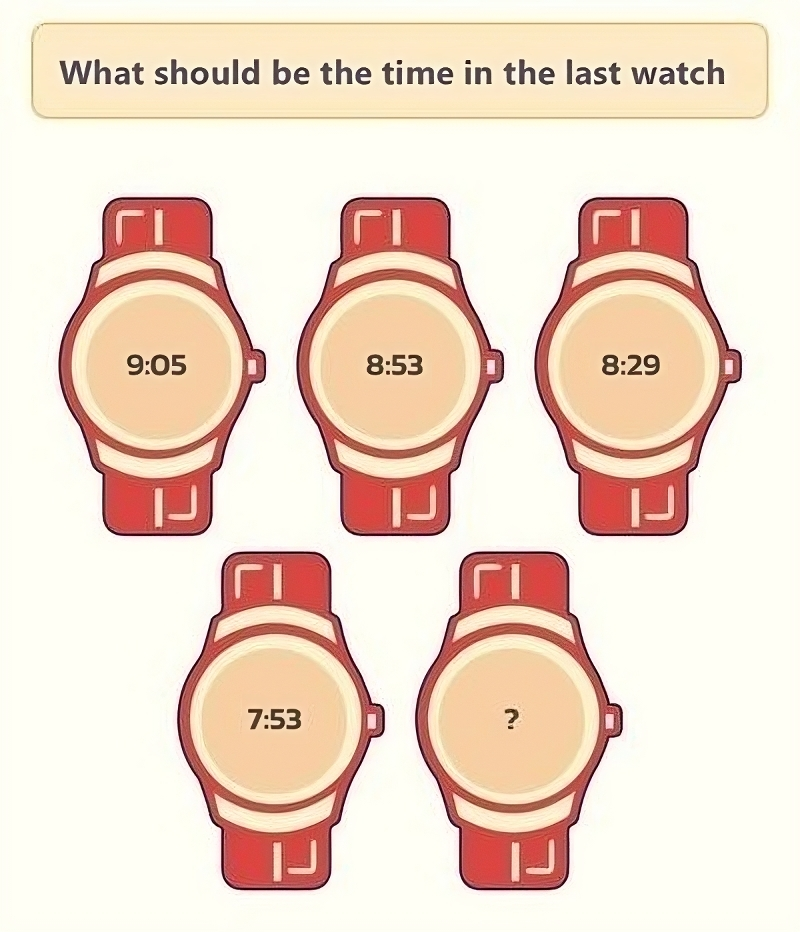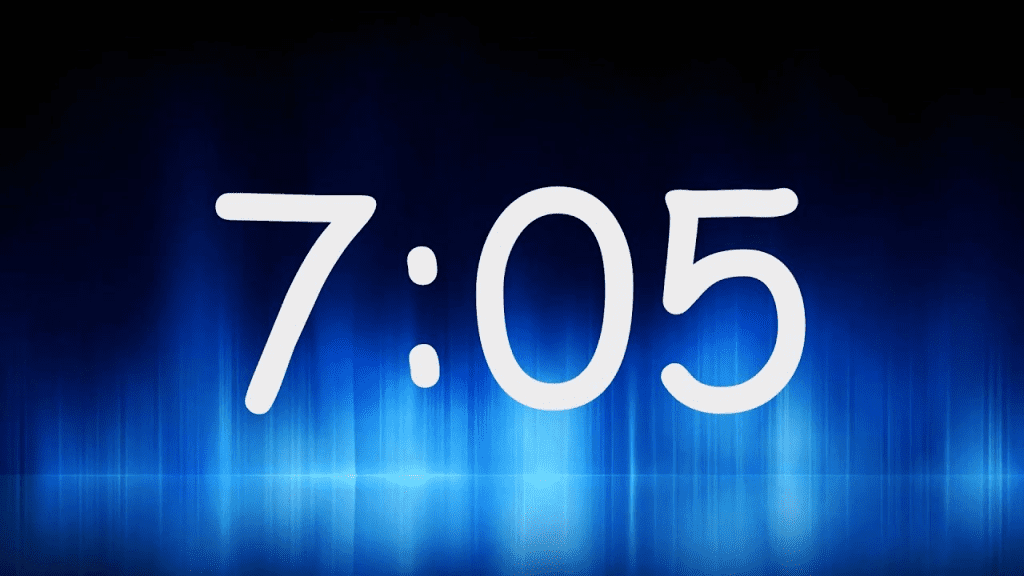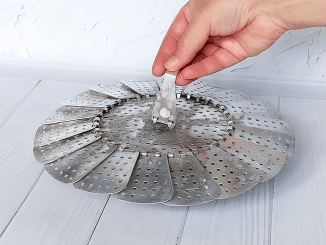When it comes to puzzles, even a seemingly simple challenge can push our logical thinking to its limits. The puzzle at hand, involving a series of watches displaying different times, does precisely that. The ultimate question is straightforward: What time should be on the last watch? Let’s break down the clues step by step, avoid common pitfalls, and reveal the solution together.

Why This Puzzle Is Trickier Than It Looks
At first glance, this puzzle might appear as a straightforward time sequence. Many people approach it expecting consistent time intervals between the watches. But that’s where the trick lies—the intervals aren’t consistent. Instead, they increase incrementally, adding a layer of complexity to the challenge.
People often get misled by assuming that the time differences are the same throughout, but solving this puzzle requires understanding how the time differences themselves change over each step.
Common Mistakes Solvers Make
Before diving into the solution, let’s highlight a few common mistakes that often trip up solvers:
- Assuming Consistent Differences: The most frequent error is assuming that the difference between each watch remains the same. People often jump to conclusions by expecting a regular subtraction, like 10 or 15 minutes each time.
- Missing the Pattern Shift: Some solvers notice that the time decreases but overlook that the amount of decrease actually increases at each step.
- Rushing the Answer: Many get excited when they spot what seems like a logical sequence and answer too quickly without checking whether the pattern applies consistently.
By understanding these pitfalls, you can avoid making the same mistakes and arrive at the correct solution step by step.
Analyzing the Sequence of Times: The Puzzle Breakdown
To solve the puzzle, we must carefully analyze the sequence of times on the watches:
- First Watch: 9:05
- Second Watch: 8:53
- Third Watch: 8:29
- Fourth Watch: 7:53
- Fifth Watch: ?
The task is to determine the correct time for the fifth watch.
Step 1: Calculate the Time Differences Between the Watches
The key to solving this puzzle lies in observing how much the time decreases between each watch:
- First Watch to Second Watch:
9:05 to 8:53 = 12 minutes decrease - Second Watch to Third Watch:
8:53 to 8:29 = 24 minutes decrease - Third Watch to Fourth Watch:
8:29 to 7:53 = 36 minutes decrease
Step 2: Identify the Pattern in Time Differences
Now, let’s focus on the differences we calculated:
- The first time difference is 12 minutes.
- The second time difference is 24 minutes (12 + 12).
- The third time difference is 36 minutes (12 + 12 + 12).
Do you see the pattern? Each decrease is increasing by an additional 12 minutes. This means that the next time decrease should be 48 minutes (12 + 12 + 12 + 12).
Step 3: Calculate the Fifth Watch’s Time
Now that we know the next decrease should be 48 minutes, let’s subtract it from the time on the fourth watch:
- Fourth Watch: 7:53
- Subtract 48 minutes: 7:53 – 48 minutes = 7:05
Thus, the correct time for the fifth watch is 7:05.
The Correct Answer: 7:05

After breaking down the pattern step by step, we can confidently say that the time on the last watch should be 7:05. This solution aligns perfectly with the increasing pattern of time differences we observed earlier.
Why This Puzzle Is So Engaging
This puzzle goes beyond simply finding the correct time. It challenges you to identify and understand a shifting pattern. The increasing interval in the time differences makes it more complex than typical time-sequence puzzles, adding an intriguing layer that tests both patience and observation skills.
The fun of this puzzle lies in its ability to surprise solvers by breaking the usual pattern of consistent intervals. It encourages us to think outside the box, making it an excellent exercise for sharpening logical thinking.
Share the Challenge with Friends
Did you solve it correctly? If so, great job! If not, don’t worry—this puzzle is meant to be challenging. It’s a fantastic opportunity to enhance your problem-solving skills. Try sharing this puzzle with your friends and see if they can figure out the pattern. It’s always more fun when you test your logical thinking together!
Conclusion
The watch puzzle is a perfect example of how even a small twist in a pattern can make solving it much more difficult. By taking the time to carefully analyze the increments and understand the logic behind the changes, we can tackle even the most complex puzzles step by step.
Puzzles like these aren’t just about finding the answer; they’re about developing analytical skills, patience, and attention to detail. The more you challenge yourself with puzzles like this, the better you’ll become at breaking down complex problems into manageable steps. So, keep exploring new puzzles, and you’ll soon find that your logical thinking skills are sharper than ever!


